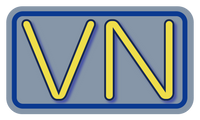

B2B Client Payment Statement
A Product developed from 0 to 1: B2B2C financial document providing final disbursements to clients based on contractual terms, customer transactions, and payments made to or on behalf of clients.
Overview
The Client Payment Statement Product aimed to revolutionize financial document generation for CaaStle, ensuring accuracy, efficiency, and scalability. By automating the process of creating client payment statements, the project sought to streamline financial tracking and enhance client satisfaction.
Problem Statement
To calculate the amount owed to/by the clients, the accounting team manually compiled transactions made by customers and other payments done to or on behalf of the clients. The data spread across multiple sources like Stripe, Netsuite and other services made the process tedious and error prone. The increasing number of clients and their various contractual terms posed potential scalability, accuracy, and punctuality concerns.
Solution
A payment statement generated monthly including,
a summary of all the revenues, applied fees, payments, reimbursements and also an additional deferred/accrued revenues section, for the given period.
a comprehensive document detailing components of each transaction used to calculate the final disbursement amount and taxes (if applicable).
a section with the inventory reconciliation details.
a detailed section with revenue generated from the CaaStle marketplace.
an ability to choose between Calendar types like Gregorian and NRF.
A secure and accessible interface to find new and past payment statements at a single place for delivery and auditing purposes.
A scalable approach to convert the contractual terms into machine readable configurations to compute the final disbursement amounts.
Standardized financial Metrics to be used across all financial reports and documents.
My Role
Developing the vision and strategy to prioritize features by compliance, urgency, cost, and complexity by managing the feature backlog and delivering a roadmap.
Constant cross-domain coordination with the management, account managers, accounting and tax teams, platform and data engineering, and data insights teams.
Facilitating Agile delivery of features by crafting technical documentation, outlining scope and release cycles, conducting UAT, and communicating new releases
Building a mechanism to onboard, record and access configurations based on contractual terms was developed to support the statement of new clients.
Develop a clean data mart with the financial and accounting transactions available for all accounting and financial reporting needs.
Established release process involving validations, UATs, standardization, documentation and communication of new/updated metrics, and stakeholder demos and training.
Defined release process which included validations and UATs, standardization, documentation and communication of new and updated metrics, providing demo and training to the stakeholders.
Key Achievements
A client payment statement is generated every month, now benefiting more than 600+ clients with 5 different types of major types of contractual terms.
The statement supports 20+ Features to address Business, Marketplace, Contractual and Compliance use cases.
An automated delivery, record keeping and archiving mechanism was also built for accessibility, security and auditing purposes.
Challenges
After the project rollout, one of the most significant hurdles we faced was the challenge of scaling while accommodating customization. Finding the delicate balance between standardization and meeting client-specific requirements proved particularly challenging in the dynamic environment of a growing company like CaaStle. Initially, our client onboarding process lacked standardized contracts, leading to bespoke feature requests for each client. To tackle this issue, we implemented several strategies. Firstly, we enforced standard contractual terms to streamline client agreements and reduce ambiguity stemming from minor language differences. Additionally, we standardized revenue and expense items that are customer-facing, ensuring consistency across contracts and resolving the majority of discrepancies.
Moreover, we developed a configuration system to capture essential contract terms, such as revenue share percentages and fees, in a key-value database. This allowed us to incorporate custom terms for each client efficiently. Furthermore, we introduced a catch-all bucket for accounting entries to record any amounts not captured in standard categories. This approach ensured seamless client onboarding and provided time to roll out customized features. These strategies not only streamlined our client onboarding process but also provided the flexibility needed to address client-specific needs effectively.
Learnings
Continuous Learning and Improvement: Embracing a mindset of continuous learning and improvement, I developed a deeper understanding of financial statements and processes, technologies, and tools.
Attention to Detail and Accuracy: Working on financial documents underscored the importance of attention to detail and accuracy. Ensuring data integrity and precision in financial reporting improved my ability to analyze complex data sets, evaluate risks and identify discrepancies.
Problem-Solving and Adaptability: Addressing challenges such as scaling while accommodating customization required innovative problem-solving and adaptability. Learning to navigate dynamic environments and find creative solutions strengthened my problem-solving skills.
Effective Project Management: Managing a complex project involving multiple stakeholders taught me valuable project management skills, including prioritization, scope management, and Agile delivery methodologies.
Cross-Functional Collaboration: Collaborating with teams across domains such as management, accounting, engineering, and data insights enhanced my ability to communicate effectively and align priorities to achieve project goals.
Tools and Technologies
Google Suite (Appsheet, Drive and Sheets)
Tableau
Hadoop
Stripe
Netsuite
JIRA, Wrike
SQL








